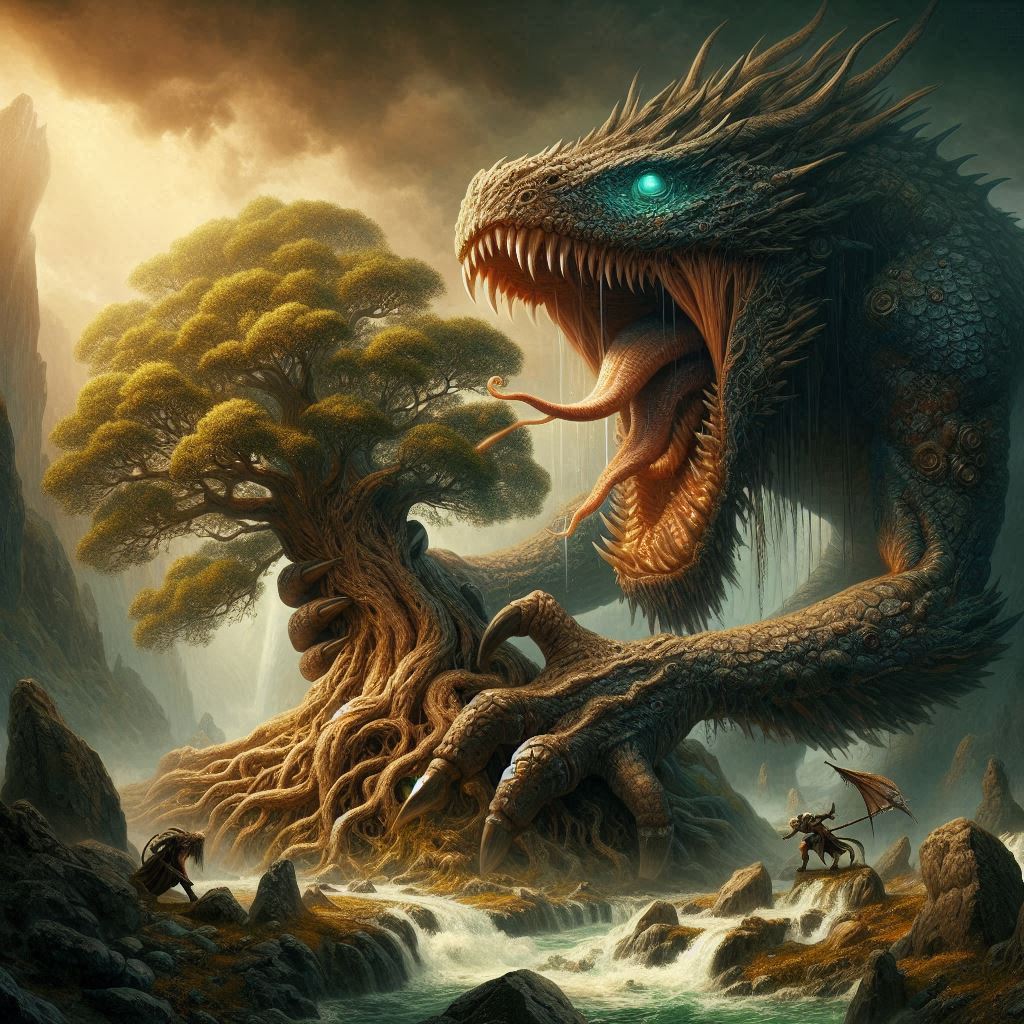Nidhoggrophobia
Fear of Destruction
Jump to the Article

Nidhoggrophobia, a neologism combining "Nidhogg" with the suffix "-phobia," would aptly capture the specific fear of this monstrous serpent. Beyond this coined term, the fear of Nidhogg could manifest as dread, a deep, primal sense of impending doom arising from his role as a symbol of destruction and chaos. His immense size, power, and association with the underworld could inspire a mix of awe and terror, where he is perceived as a force of nature to be both respected and feared. Finally, the threat posed by Nidhogg to the very foundations of the world could trigger existential anxiety, a profound unease and uncertainty about the meaning of life and the future in the face of such overwhelming cosmic forces.
Nidhogg, a fearsome dragon or serpent in Norse mythology, plays a crucial role in the cosmology of the Vikings. He is most infamous for his relentless gnawing at the roots of Yggdrasil, the world tree that connects the nine realms.
A Symbol of Destruction:
Nidhogg represents the forces of destruction and chaos that constantly threaten the stability of the cosmos. His gnawing at Yggdrasil symbolizes the ever-present danger of the universe falling into disarray. This constant threat adds a layer of tension to the Norse worldview, highlighting the precarious balance of existence.
Nidhoggr's persistent attack of Yggdrasil, the World Tree
Nidhoggr's relentless gnawing at the roots of Yggdrasil in Norse mythology symbolizes the constant threat to the stability and order of the cosmos.
- Erosion of Existence: By attacking the very foundation of the universe, Nidhoggr represents the ever-present danger of chaos and destruction. It highlights the precarious balance of existence and the constant struggle against forces seeking to unravel reality's fabric.
- The Inevitability of Change: Despite its immense power, Yggdrasil is not immune to decay and destruction. This symbolizes the cyclical nature of existence and the inevitability of change, even on a cosmic scale.
- The Struggle Between Order and Chaos: The conflict between Nidhoggr and the forces that sustain Yggdrasil embodies the eternal struggle between order and chaos, good and evil. It reminds us that the universe is a dynamic and ever-shifting place where these forces are constantly in flux.
- The End of Days (Ragnarok): Nidhoggr's constant gnawing also foreshadows the eventual destruction of Yggdrasil and the onset of Ragnarok, the apocalyptic battle that will bring about the end of the current world.
In essence, Nidhoggr's attack on Yggdrasil is a powerful metaphor for the fragility of existence, the constant threat of destruction, and the cyclical nature of life and death in the Norse worldview.
More Than Just a Destroyer:
While primarily known as a destroyer, Nidhogg also has other significant roles:
- Guardian of the Underworld: He dwells in Niflheim, the realm of mist and cold, where he guards the entrance to the underworld.
- Punisher of the Wicked: Nidhogg is said to devour the corpses of those who have committed perjury, murder, and adultery. This role aligns him with the concept of cosmic justice and the punishment of the wicked in the afterlife.
A Figure of Mythological Complexity:
Nidhogg is a complex figure in Norse mythology. He is both a destroyer and a force of justice, embodying the duality of existence and the constant struggle between order and chaos. His presence in the myths serves as a reminder of the fragility of the universe and the importance of maintaining balance and order.
In Popular Culture:
Nidhogg has gained popularity in modern times, appearing in various forms of media, including video games, literature, and art. He continues to fascinate and inspire, serving as a powerful symbol of destruction, chaos, and the enduring struggle between good and evil.
Sources
- "Níðhöggr" - Wikipedia. Accessed January 21, 2025.
- "Níðhöggr" - Mythology.net. Accessed January 21, 2025.
- "Níðhöggr" - Norse Mythology. . Accessed January 21, 2025.
- "Nidhogg (Níðhöggr) in Norse Mythology" - Norse Mythologist. Accessed January 21, 2025.
- "Nidhogg: Serpent of the Underworld in Old Norse Mythology" - Vikingr. . Accessed January 21, 2025.
